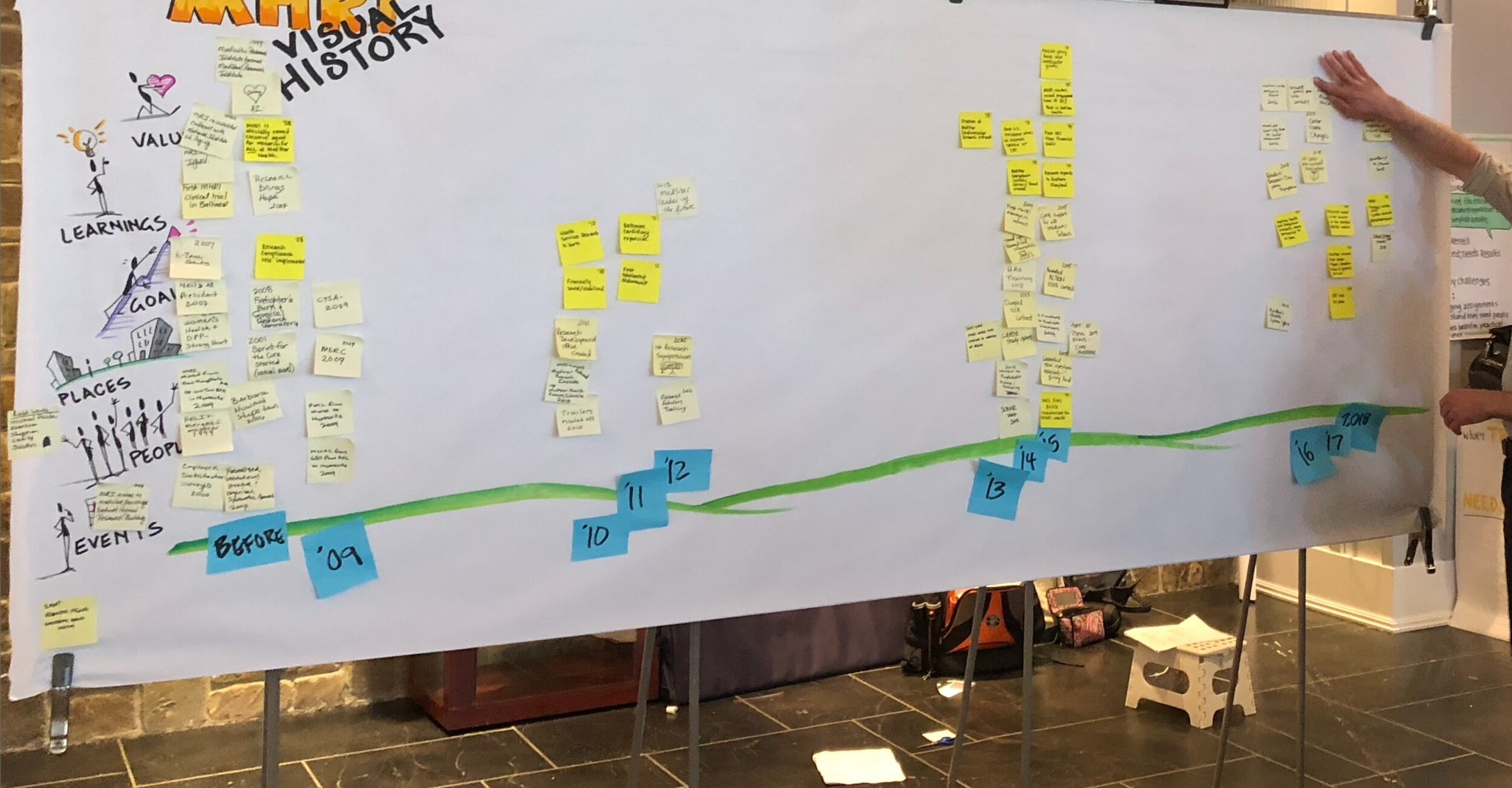Visual Facilitation Tools for New-to-Visual Facilitators
“Wow, look at everything we did this year,” says Marcus.
“I think we did too much,” says Vanessa.
“We need to focus more next year,” says Edgar.
An hour into facilitating our visual history mapping activity, it was clear that we had unpacked three years' worth of events, changes and insights. The tension dropped, and it seemed like a veil had been lifted. Events that went undiscussed for a year and created many conflicts were out in the open, up on the wall for all to see. Now, we could have a constructive conversation about what we learned and what this means for the next year.
Why Visuals Work
Visual tools help people see their ideas in a way that gets people focused and on the same page… literally! Sixty-five percent of the population are visual learners (Zopf et al., 2004). Visual learners learn best through visual reinforcements, so if you’re not using visuals, you’re missing out on a huge opportunity to engage participants.
Using visuals in meetings leads to:
Higher engagement
Higher information retention, and
Faster decision-making
Using visuals in meetings also makes it easier to see connections between ideas.
What Visual Tools Are
We’re not talking about your average slide deck filled with eye-bleeding data and too much tiny text. We’re talking about visual templates on paper or online with which participants can actually engage.
You might use a visual template to facilitate a conversation about:
Unpacking past events and learnings
Establishing team norms
Understanding current trends
Empathizing with product users
Creating a picture of the future
Setting concrete goals
Designing a roadmap
Prototyping a project idea
And much more…
In other words, whatever the purpose of your meeting, there is a visual tool for you.
TRY THIS: Start Using Visual Tools (20 MINS)
Why are we meeting? The first step is understanding your desired outcome. You don’t need to design a collaborative meeting if a decision has already been made. What needs to be done together? What group discussion needs to be led?
Who needs to attend? Who is needed to have this conversation? Think of the people who may be impacted by the outcome. Even if you need to keep it small, consider who can attend to represent diverse voices.
How will you meet? Are you meeting online, in-person or hybrid? (If you’re unsure, try our Meeting Type Quiz). If you’re meeting online or a mix of online and in-person, consider virtual tools, such as MURAL or Google Docs. If you’re meeting in person, flipcharts make excellent visual templates.
Design your template. There are many visual templates already out there for you to purchase, use and modify to meet your needs. Here are a few of our favorite resources:
At a basic level, your template should always include questions, prompts, and space for participants to add content. Keep in mind that visually, we like top-to-bottom, left-to-right “flow” when we’re working through something. Color-wise, I like keeping templates on a grayscale and allowing participants to fill them with color.
Get feedback. Before your meeting, walk through the template and process you will use with a trusted colleague or peer. Bonus points if you create an example you can show when you tee up the activity for real.
Ready to become a confident visual facilitator? Introduction to Facilitating with Visuals, hosted by Voltage Control, is a comprehensive online course designed to help facilitators and meeting leaders use visuals confidently.



